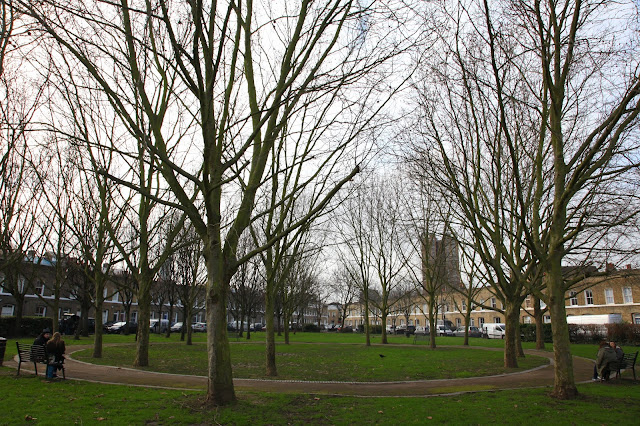The failure of a public consultation process
has called for collective action across London’s East End.
That is how change is brought about by the
way. By the masses uniting and converging on something they deeply believe in.
This is exactly what happened on November 27th,
2013. The anonymous group called the East End Preservation Society born out of disdain and discontent for the
commercial and residential development plans, which were announced for
Shoreditch with no discussion or input by the local community.
The society had something to say, very loudly
and very clearly: That heritage will always come first before height.
The society was in fact responsible for the
rescue of The Marquisof Lansdowne pub, which was intended to be
demolished by the Geffrye Museum.
“In this climate, where democratic
decision-making is being undermined and public consultation reduced to a
cynical public relations exercise… this was a joyful exception to the rule,
proving that strength of public feeling can still be successful in saving an
old building,” it was reported in their website.
 |
| All photos by Jason Di-Candilo @billthebadger |
At the centre of their concerns is the Hammerson and Ballymore’s gigantic £800
million Bishopsgate Goodsyard scheme, presently one of the largest derelict
sites in inner London. It is proposed to add
3.7 sq ft of residential, retail and office space including up to 2,000 new
homes. That’s six large towers, rising from a height
of 25 storeys to two vast 40-plus-storey blocks measuring almost 600ft high.
The problem?
The site is home to a low-rise historic
neighbourhood containing no fewer than five conservation areas and is primarily
defined by low- to medium-rise brick, light-industrial warehouses and
residential terraces.
In fact, it was formerly the home of
Bishopsgate station, which was built in 1840 and was in regular use until it
was closed and converted into a goods yard in 1881. The depot was in operation
until it was largely destroyed by a fire in 1964, after which a long period of
dereliction ensued. After an equally contentious planning and legal battle in
the early 2000s, most of the remaining structure was demolished in 2003 to make
way for the new East London line extension, which the current Shoreditch High
Street station built on the site serves.
It represents the endless controversial
debates around tall buildings and affordable housing, and it also touches on
wider contentious issues like regeneration, gentrification, employment, social
and cultural exclusion, urban identity and the adequacy of the planning system.
Therefore, whatever happens at Bishopsgate Goodsyard will have an influence
that stretches far beyond its borders they warn.
The Society also claims that “43 per cent of
the existing surrounding buildings surveyed by the developer’s consultants will
suffer major loss of sunlight” and that “a large amount of 19th century
historic fabric surviving on the site will be demolished” if current plans go
ahead.
They also offer a blunt cautionary statement
to planners: “Should a development of this size and scale be permitted, it will
mark a new and disturbing chapter in the expansion of the City into the East End,
expansion that threatens to destroy the life, character and diversity that
makes this area special,” according to their website.
Jules Pipe, the Mayor of Hackney, issued an
impassioned plea for people to sign his petition against the Bishopsgate
Goodsyard development in February.
“These luxury flats will cast a shadow over
the whole of Tech City and threaten to damage the local creative economy. The
repercussions could be so severe they lead to the loss of thousands of local
jobs.”
Mr Pipe added: “It is totally out of scale
for Shoreditch, and the whole development’s 10 per cent affordable housing
figure is derisory.”
“It has taken twenty years or more for
Shoreditch and Brick Lane to develop into the areas they are. It has been hard
won, and is now something, which brings economic and social success to the local
community. This development promises to severely damage all of that success in
a way which cannot be overturned,” he explained.
The East End Preservation Society invites all people who care about the East End and are concerned
about the future of its built environment to join their community to help the
collective voice get heard.
Question:
How we can act collectively, like a true community, to stand up for our
neighbourhood? Share your thoughts in the comment box below.
For more on the planned developments for East London, see The end of street: Questionable ‘development’ for the East End and Spotlight on Shoreditch: Full Circle and Say Bye Bye to Affordable Housing.
-----------------------------------------------------------------------------------------
Leah Davies is a purpose-filled writer, human rights activist and coach for budding wordsmiths, who is driven to cultivate change through our stories. Her social business Paper Planes Connect is a place to celebrate our difference and to unite in our sameness. Using her experience as a journalist and international development worker, she supports the social conscious to platform their voice and create change, both big and small.
Email: leah@paperplanesconnect.com








